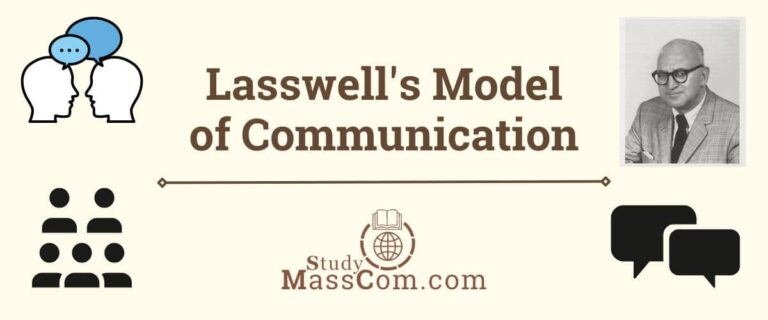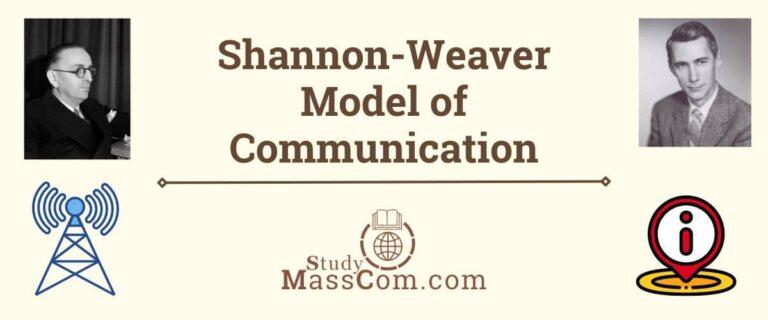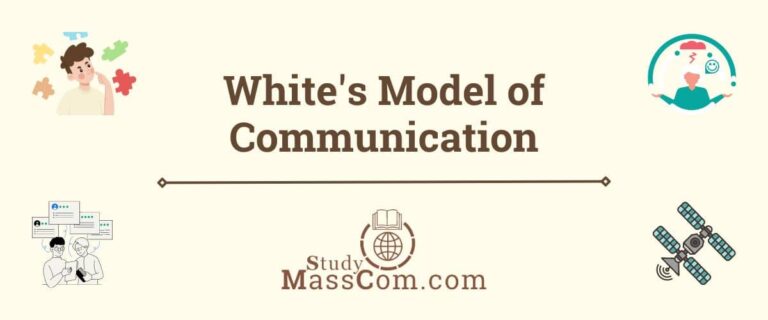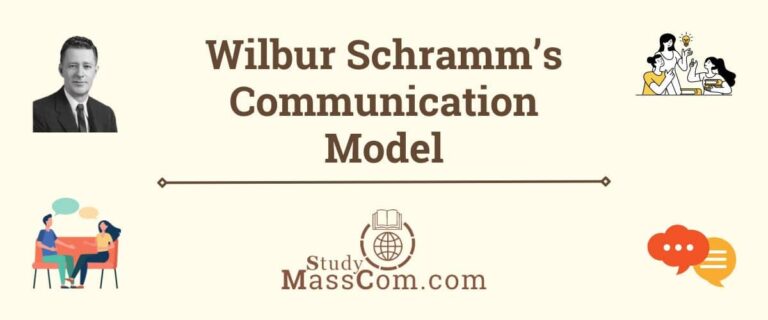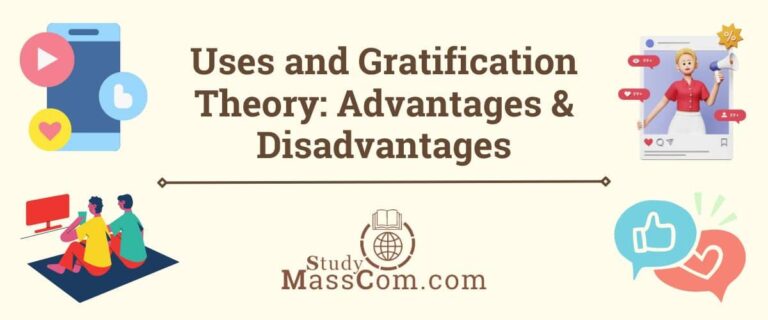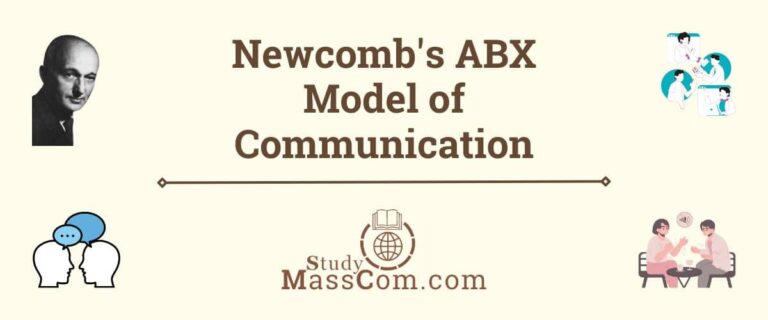Two-Step Flow Theory: Strengths and Weaknesses
The Two-Step Flow Theory, proposed by sociologists Paul Lazarsfeld, Bernard Berelson, and Hazel Gaudet in the 1940s, is a communication theory that focuses on the role of opinion leaders in influencing the opinions and attitudes of the larger population. According to this theory, media messages are not directly received and processed by the masses but are first filtered and interpreted by opinion leaders, who then disseminate their interpretations to their followers. While the theory has been influential and extensively studied over the years, it is not without its strengths and weaknesses. In this article, we will explore the various strengths and weaknesses of the Two-Step Flow Theory.
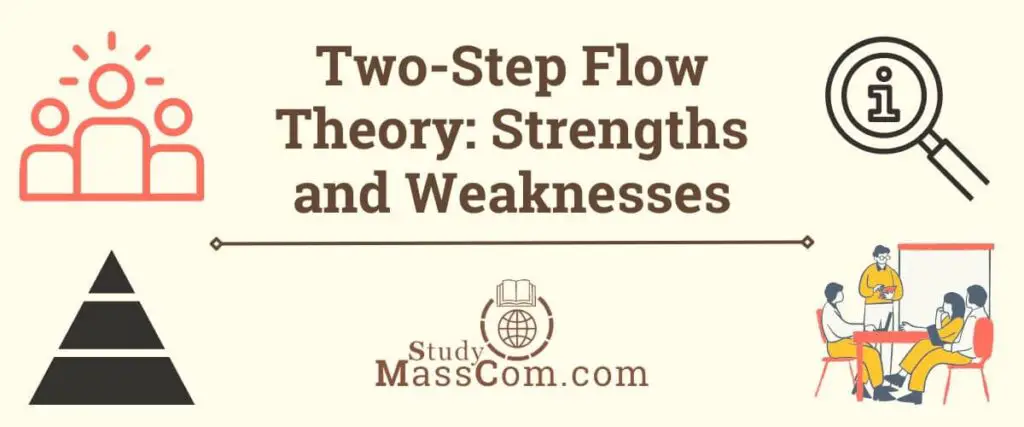
Two-Step Flow Theory: Definition
The Two-Step Flow Theory is a communication theory proposed by Paul Lazarsfeld, Bernard Berelson, and Hazel Gaudet in the 1940s. It suggests that the influence of mass media on the general public is not direct but mediated through opinion leaders. According to this theory, information and media messages reach the masses through a two-step process.
Step 1: Opinion Leaders
Opinion leaders are individuals who are highly informed and knowledgeable, and hold significant influence within their social circles. They actively consume media and interpret its content based on their own beliefs and attitudes.
Step 2: Diffusion to the Masses
After interpreting the media messages, opinion leaders share their opinions, ideas, and recommendations with their followers and peers through face-to-face or interpersonal communication. This process is more influential than direct exposure to media because people tend to trust and be influenced by those they have personal connections with.
In summary, the Two-Step Flow Theory proposes that media messages are filtered through opinion leaders before reaching a larger audience, making interpersonal communication a crucial factor in shaping public opinion and attitudes.
Strengths of Two-Step Flow Theory
Real-World Applicability
The Two-Step Flow Theory has demonstrated real-world applicability in numerous studies and situations. For example, in the field of marketing and advertising, understanding the role of opinion leaders and their influence on others has proven valuable in designing effective marketing campaigns and strategies.
Insight into the Role of Interpersonal Communication
This theory highlights the significance of interpersonal communication in the diffusion of information and ideas. It underscores the fact that media messages alone do not shape public opinion; rather, they interact with personal communication channels, providing a comprehensive understanding of the communication process.
A Nuanced Understanding of Media Effects
Unlike early media theories that presumed the direct and powerful effects of media on individuals, the Two-Step Flow Theory offers a more nuanced perspective. By introducing the concept of opinion leaders, the theory acknowledges the role of mediating factors between media influence and individual behavior.
Influence of Social Networks
The theory recognizes the importance of social networks and their impact on information diffusion. It emphasizes the role of social ties and the transmission of information within these networks, making it relevant in the age of social media and digital communication.
Adaptability Across Cultures
The Two-Step Flow Theory has been studied in various cultural contexts, and researchers have found evidence of its applicability across different societies. This suggests that the underlying mechanisms of opinion leadership and interpersonal influence have universal elements.
Empirical Support
Over the years, numerous studies have provided empirical support for the core principles of the Two-Step Flow Theory. These studies have demonstrated the role of opinion leaders in shaping public opinion on topics ranging from political issues to consumer behavior.
Weaknesses of Two-Step Flow Theory
Simplistic Portrayal of Media Influence
Critics argue that the Two-Step Flow Theory oversimplifies the relationship between media and audiences. While the theory acknowledges the mediating role of opinion leaders, it may downplay the direct impact of media messages on individuals.
Neglect of Individual Agency
The theory places substantial emphasis on the role of opinion leaders, potentially neglecting the agency and decision-making capacity of individuals in the communication process. It assumes a relatively passive role for the masses, which may not reflect the complexity of human behavior.
Overemphasis on Interpersonal Communication
While interpersonal communication is undoubtedly significant, the Two-Step Flow Theory may downplay the importance of direct exposure to media messages. In today’s media-saturated environment, individuals often encounter media content directly and can be influenced by it.
Lack of Clarity in Defining Opinion Leaders
The theory does not provide a clear and standardized definition of what constitutes an opinion leader. Different studies use varying criteria to identify opinion leaders, making it challenging to compare findings across research.
Difficulty in Identifying the Direction of Influence
It can be challenging to determine the direction of influence in the two-step flow process. It is unclear whether opinion leaders are influenced by media messages themselves or if their attitudes and beliefs preexist, leading them to seek out and interpret media in a particular way.
Limited Scope in the Digital Age
The Two-Step Flow Theory was formulated in an era when mass media, such as newspapers and radio, dominated communication channels. With the rise of social media and personalized online content, the theory’s applicability to the digital age may be questioned.
Neglect of Other Factors
The theory primarily focuses on the role of opinion leaders and interpersonal communication, potentially neglecting other influential factors, such as socio-economic status, education level, and cultural background, which can shape media consumption and information dissemination.
Generalization Challenges
As with any theoretical model, generalizing the findings of the Two-Step Flow Theory to diverse populations and contexts can be problematic. Cultural variations and changes in media consumption habits may limit its universal application.
Check out Two-Step Flow Theory vs. Multi-Step Flow Theory.
Importance of Two-Step Flow Theory
The Two-Step Flow Theory holds significant importance in the field of communication and social influence. Several key aspects highlight its relevance:
Understanding Media Influence
The theory provides a more nuanced understanding of how media messages shape public opinion. It goes beyond the simplistic notion of direct media effects on individuals and emphasizes the mediating role of opinion leaders in the communication process.
Identifying Opinion Leaders
By recognizing the existence and influence of opinion leaders, the theory helps researchers and practitioners identify key individuals who play a crucial role in disseminating information and shaping attitudes within social networks.
Targeted Marketing and Advertising
Understanding the two-step flow process is valuable for marketers and advertisers. Instead of solely focusing on mass media campaigns, they can identify opinion leaders and leverage their influence to spread messages more effectively within target audiences.
Explore the DAGMAR and AIDA models in advertising.
Influence on Public Policy
The theory’s insights into how opinions are formed and spread have implications for policymakers. By identifying opinion leaders in various social and political contexts, policymakers can work with these influential figures to promote their ideas and initiatives.
Social Network Analysis
The Two-Step Flow Theory underlines the importance of social networks in the communication process. It has contributed to the development of social network analysis as a valuable tool for understanding information dissemination and influence within communities.
Effectiveness of Word-of-Mouth Communication
The theory highlights the power of word-of-mouth communication in shaping public opinion. It emphasizes that information shared through interpersonal channels is often more influential and trusted than mass media messages.
Adapting to Digital Media
Though formulated in the mid-20th century, the core principles of the Two-Step Flow Theory remain relevant in the digital age. Understanding how opinion leaders operate in online social networks can guide digital marketing strategies and online reputation management.
Public Health Campaigns
The theory’s emphasis on interpersonal influence is essential in designing effective public health campaigns. Identifying influential individuals within communities can help in promoting healthy behaviors and disseminating vital health information.
Media Literacy
The Two-Step Flow Theory reminds us that media messages are not the only source of information. Encouraging media literacy and critical thinking can help individuals assess information received from both media sources and their interpersonal networks.
Academic Research
The theory has sparked significant academic research in the fields of communication, sociology, and psychology. Researchers continue to explore and validate the concepts of opinion leadership, interpersonal influence, and information diffusion.
In summary, the Two-Step Flow Theory offers valuable insights into the complex process of media influence and information dissemination. It has practical implications for marketing, public policy, public health, and understanding the dynamics of social networks, making it an essential framework in the study of communication and society.
Criticism of Two-Step Flow Theory
The Two-Step Flow Theory, despite its contributions to the understanding of media influence, has faced criticism over the years. Some of the main criticisms include:
Simplistic Media Influence
Critics argue that the theory’s emphasis on the role of opinion leaders may downplay the direct impact of media messages on individuals. It neglects the possibility of media having a more direct and powerful influence on shaping public opinion.
Neglect of Individual Agency
The theory’s focus on opinion leaders can overlook the active role of individuals in interpreting and processing media messages. People are not passive recipients of information; they actively engage with media content and make their own judgments.
Limited Definition of Opinion Leaders
The theory lacks a standardized and clear definition of what constitutes an opinion leader. Different studies may use varying criteria to identify opinion leaders, making it difficult to compare findings and generalize conclusions.
Direction of Influence Ambiguity
It is not always clear whether opinion leaders are influenced by media messages themselves or if their attitudes and beliefs preexist, leading them to seek out and interpret media in a particular way.
Neglect of Other Influences
The Two-Step Flow Theory primarily focuses on opinion leaders and interpersonal communication, potentially neglecting other influential factors such as socioeconomic status, education level, and cultural background, which can also shape media consumption and information dissemination.
Limited Applicability to the Digital Age
The theory was formulated during an era dominated by traditional mass media like newspapers and radio. In today’s digital age, with social media and personalized content, the dynamics of information dissemination have changed significantly, raising questions about the theory’s relevance in modern contexts.
Small-Scale Studies
Some criticisms stem from early studies conducted by Lazarsfeld and colleagues, which were often limited in scope and focused on specific issues like political campaigns. Critics argue that the findings may not be generalizable to broader contexts.
Social and Cultural Context
The theory may not fully account for the influence of social and cultural factors in shaping information dissemination and opinion formation within different communities and societies.
Lack of Update
The Two-Step Flow Theory was formulated in the mid-20th century, and while it has been influential, there has been limited updating or revising of the theory to accommodate changes in media and communication landscapes.
Media Diversity
With the rise of media diversity and fragmentation, the theory may not fully capture how individuals are exposed to multiple information sources and navigate a complex media environment.
While the Two-Step Flow Theory has made valuable contributions to communication research, it has faced criticism for its simplistic portrayal of media influence, limited definition of opinion leaders, and neglect of other influential factors. As media and communication continue to evolve, researchers must consider these criticisms and adapt the theory’s concepts to better understand the complexities of information dissemination and public opinion formation in contemporary society.
Learn about the Multi-Step Flow Theory.
Conclusion
The Two-Step Flow Theory offers valuable insights into the role of opinion leaders and interpersonal communication in shaping public opinion. It has been extensively studied and applied in various fields, demonstrating its real-world relevance. However, the theory also has its weaknesses, including an oversimplification of media influence, neglect of individual agency, and challenges in defining and identifying opinion leaders. As media landscapes continue to evolve, researchers must consider these strengths and weaknesses to refine and expand upon the Two-Step Flow Theory’s understanding of communication processes in contemporary society.
FAQs
The Two-Step Flow Theory is a communication theory that proposes the influence of mass media on the public occurs through a two-step process. First, media messages are received and interpreted by opinion leaders who are highly informed and influential individuals. Then, these opinion leaders disseminate their interpretations to the wider population through interpersonal communication. The theory suggests that media messages are filtered and shaped by opinion leaders before reaching the general public, making interpersonal communication a crucial factor in shaping public opinion and attitudes.
The Two-Step Flow Theory was proposed by sociologists Paul Lazarsfeld, Bernard Berelson, and Hazel Gaudet in the 1940s. They conducted research during the 1940 U.S. presidential election to understand the impact of media on voter behavior. Their findings led to the formulation of the Two-Step Flow Theory, which highlighted the influential role of opinion leaders in shaping public opinion by mediating media messages and disseminating their interpretations to others within their social circles.
One major weakness behind the Two-Step Flow Theory of communication is its oversimplification of media influence. The theory emphasizes the role of opinion leaders as mediators between mass media and the general public, but it may neglect the direct and multifaceted effects that media messages can have on individuals. By focusing primarily on the influence of opinion leaders, the theory may overlook the varied ways in which media directly shape attitudes and opinions. Additionally, the theory does not account for the diverse media consumption habits and preferences of individuals in the modern digital age, where people are exposed to a wide array of media sources and platforms.

